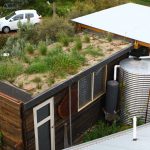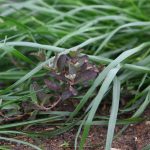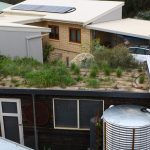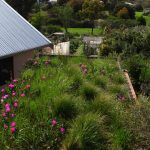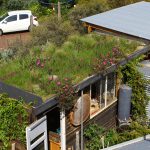Green roofs rely on a series of layers to provide adequate support, waterproofing, and a suitable growing medium for the chosen species of plants. Their visual beauty, biodiversity value and insulation properties make them a practical and aesthetic addition to any building, though not all buildings are well suited to a green roof. These pieces of living architecture are also known as living roofs.
The green roof layers
This do-it-yourself (DIY) green roof was constructed in 2019 entirely by the owners using a shipping container as it provided an ideal base structure, stronger than most timber-framed buildings of a similar size and are waterproof.
Moving up from the substructure, the next layer was a timber frame with a slope of 3% for water shedding, and also to provide a suitable material to fix the 19 mm structural ply layer onto – chosen in part due to cost, and partly due to waterproofing properties. After painting with two coats of leftover acrylic paint on both sides, the ply was fixed down to the timber frame and surrounded by more ply and wide boards to create a shallow box 250 mm deep around the entire green roof structure.
Second-hand heavy duty HDPE plastic liner was used above the ply as a waterproof layer. The waterproof layer was oversized, so needed no joins –the greatest point of weakness in any waterproofing installation. This liner was draped up the sides of the box in addition to the base, to avoid wet soil resting against timber or ply. One hole in the waterproofing was necessary to facilitate drainage into a 90 mm Zincalume pipe, which was silicone-bonded to the membrane, and led to a simple rain-chain into the garden bed below.
A drainage layer of modular recycled plastic Hydrocell sheeting, produced by Global Synthetics, was installed above the waterproofing. The Hydrocell panels interlock and form a 30 mm deep drainage layer between the waterproofing and substrate, facilitating efficient drainage.
A spun (non-woven) geotextile was installed on top of the Hydrocell, ensuring it also folded up the sides of the roof box, to separate the drainage layer and growing medium and retain as much of the soil as possible. The geotextile is a permeable fabric, made from polyester or polypropylene, that allows water to drain through but stops fine particles of soil and roots from penetrating.
Structural engineering advice was sought and calculations for this green roof construction were based on a maximum of 300 mm of soil. However, a soil depth of around 200 mm was chosen to grow groundcovers and drought-tolerant grasses, though with settling this has reduced to 150 mm. As the type of growing media is important, an organic blend, made from sand, compost and a small amount of clay, was sourced from SA Composters.
Planting
Around 40 native grasses, sedges, and groundcovers were planted once the growing medium had settled. The plants included Desert Speargrass (Austrostipa eremophila), Knobby Club Rush (Isolepis nodosa), Feather Speargrass (Austrostipa elegantissima), Kangaroo Grass (Themeda triandra), Creeping Saltbush (Rhagodia spinescens) and Karkalla (Carpobrotus rossii). As the soil profile is so shallow, drip irrigation was installed to help the plants establish over their first summer. The irrigation was run for 30 minutes every 2 or 3 weeks between October and February, and ensured good plant survival.
Extra plants were introduced in winter 2020 – particularly groundcovers to fill in gaps in plantings and increase the cascading effect in the future.
Maintenance
Maintenance is minimal aside from small amounts of weeding every few months, and cutting back grasses at the start of autumn to encourage vigorous new growth.
Final product
The plants have now been established for over a year – the results are a lush carpet when viewed from above, and the beginnings of a green waterfall draping over the northern edge.
The thermal comfort inside the container is greatly improved, particularly in summer when the cool soil above the metal ceiling reduces temperatures through shading and evaporation.
Adapted from a case study and images by Sam Ryan from Folk of all Trades
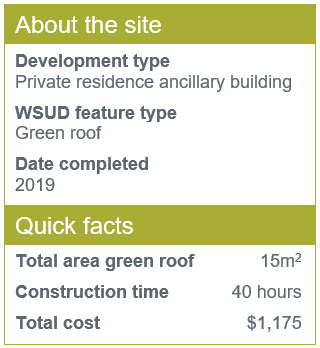
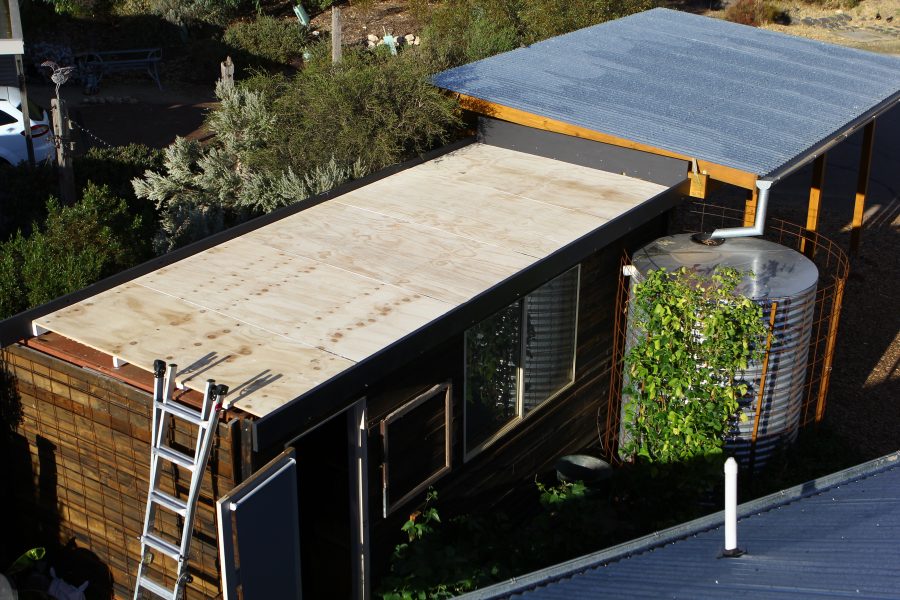
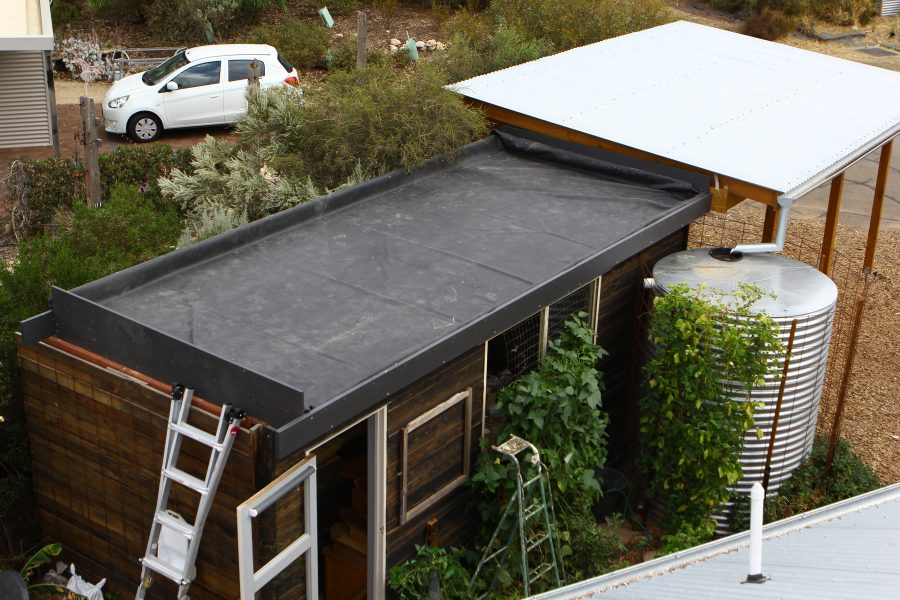
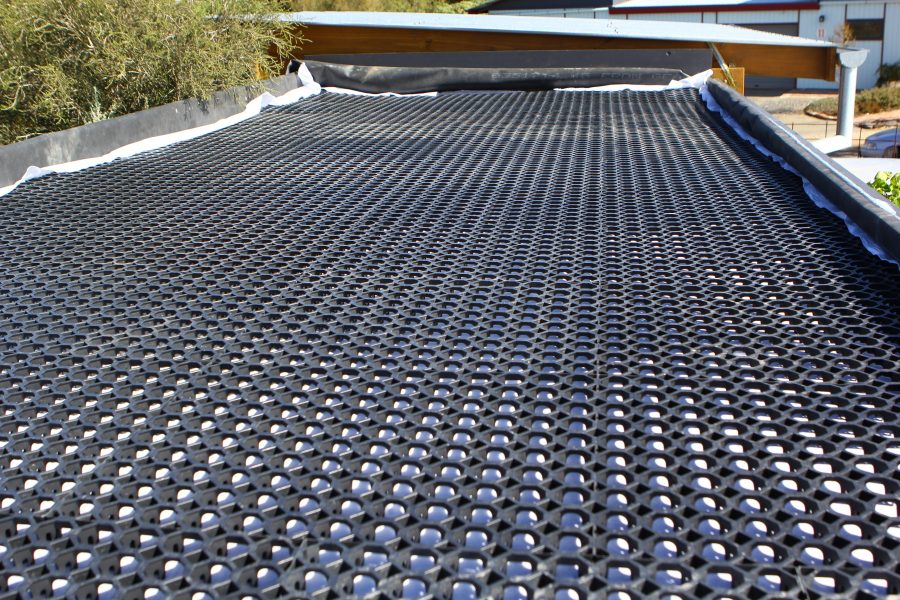
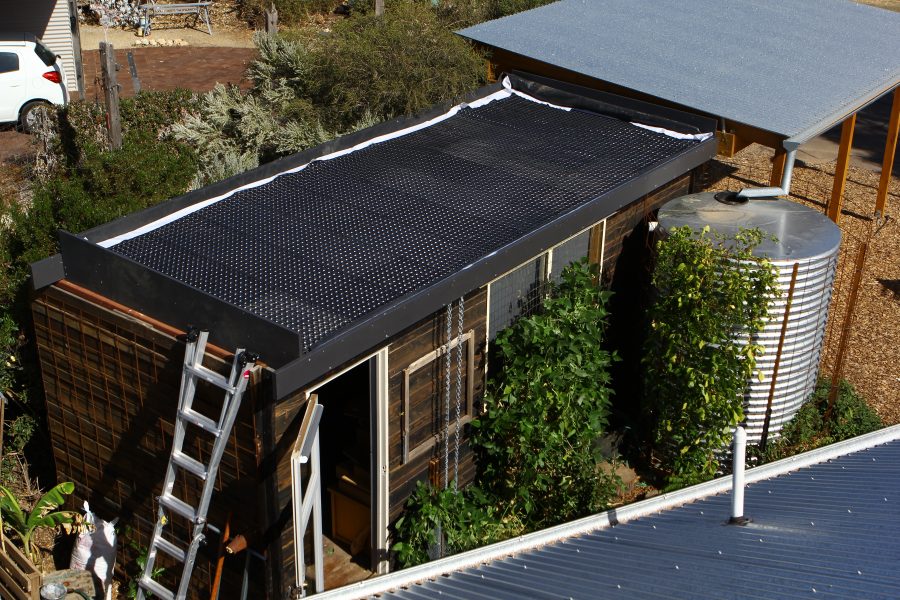
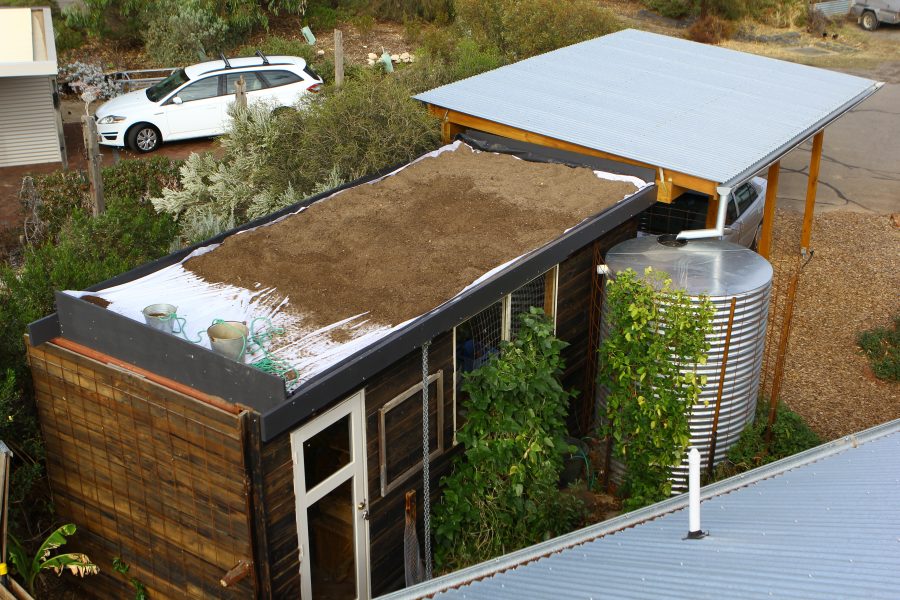
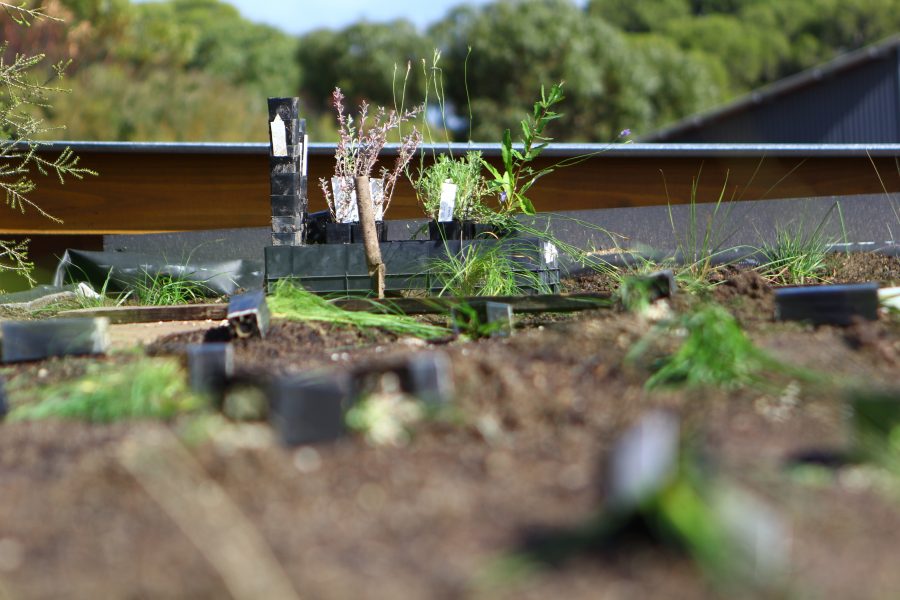
- DIY green roof construction at Aldinga. Image: Sam Ryan, Folk of all Trades
- DIY green roof construction at Aldinga. Image: Sam Ryan, Folk of all Trades






